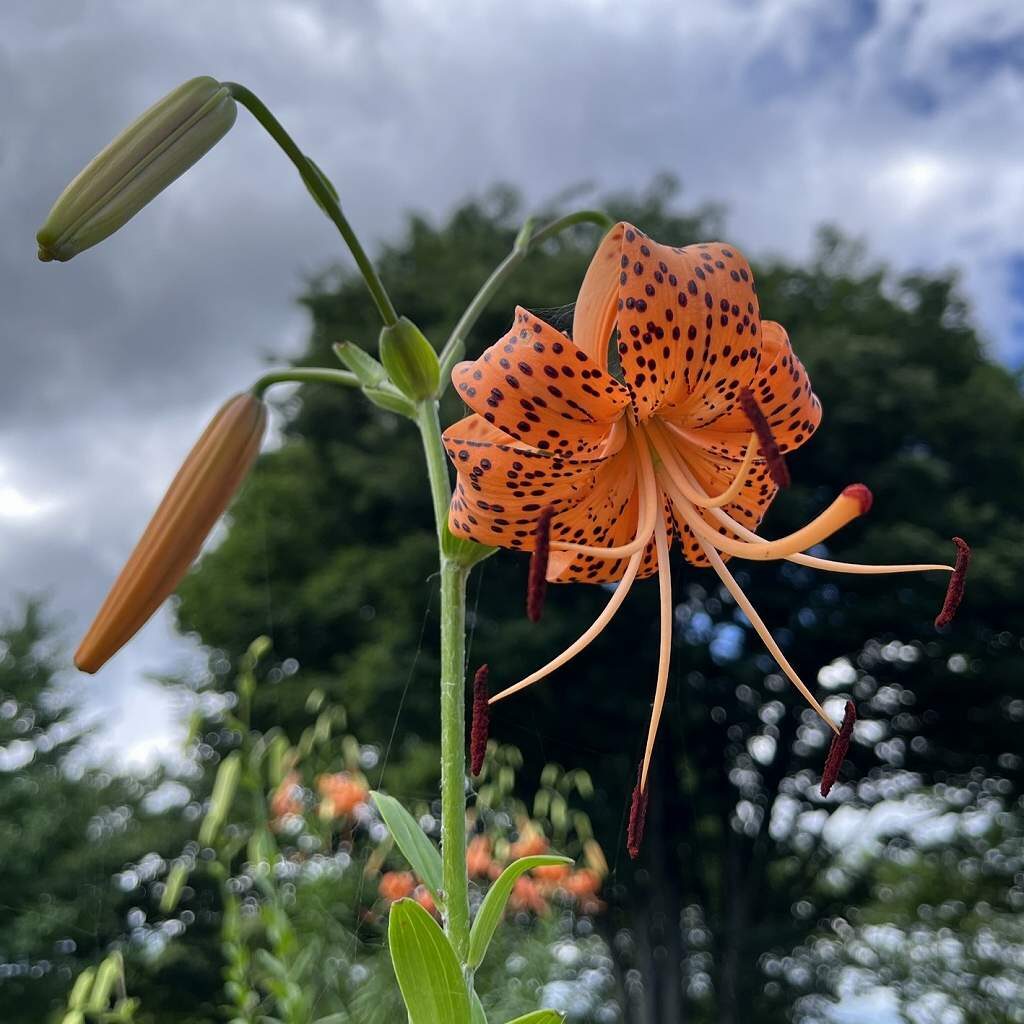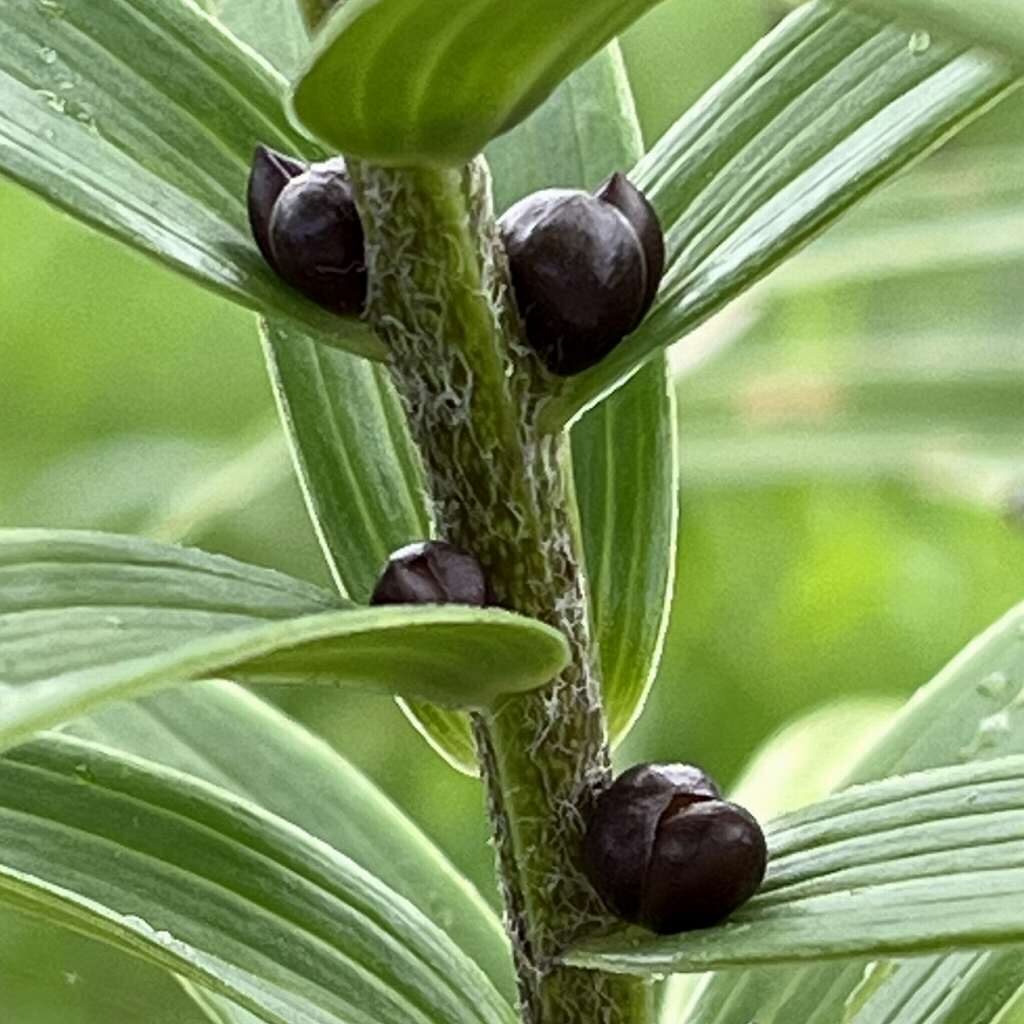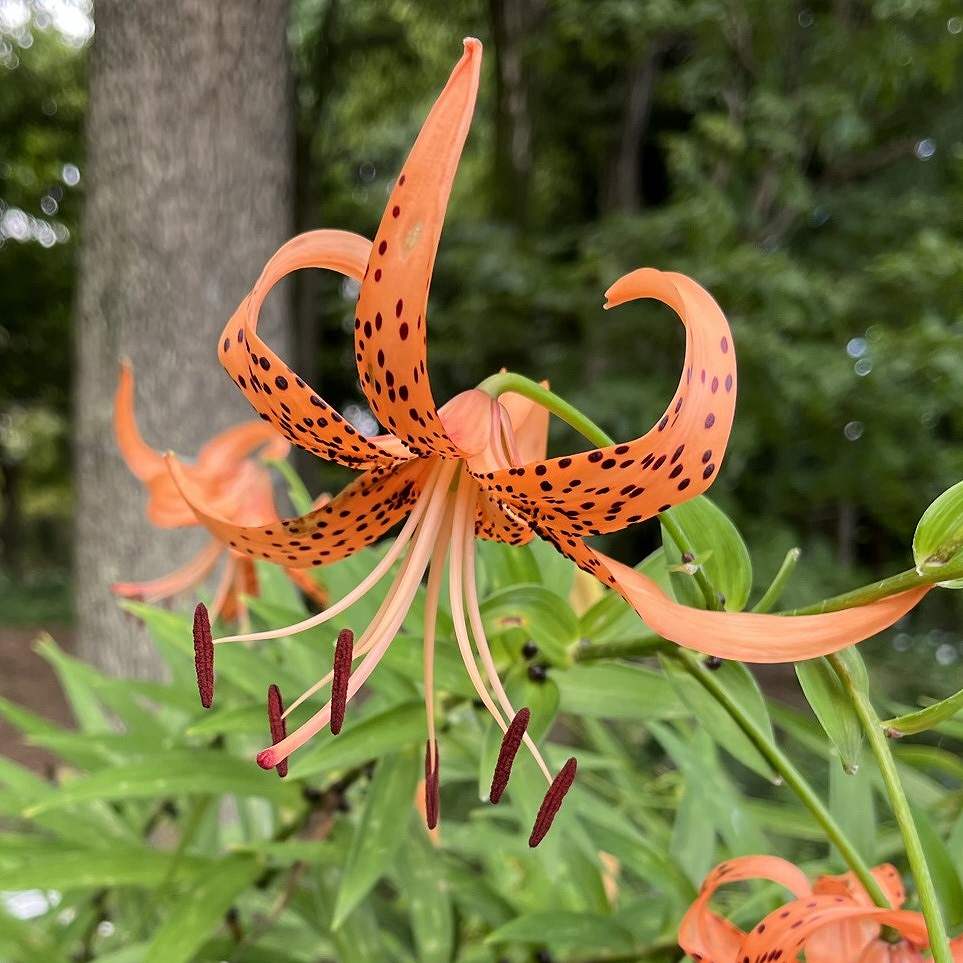オニユリの名前の由来はユリ属の中でも花が大きく目立つから。そして地上にはムカゴができ、地下には鱗茎ができ、いずれも食べられます。
The origin of the name of tiger lily is that the flowers are large and conspicuous in the genus Lilium. And there are propagules on the ground and bulbs underground, both of which can be eaten.
【仮名】オニユリ
【和名】鬼百合
【英名】Tiger Lily
【学名】Lilium lancifolium
【誕生】07/ 22, 07/ 29, 08/ 30, 09/ 01, 09/ 15, 10/ 04
【開花】07, 08月
【花色】Orange




オニユリ
オニユリの姿
オニユリはユリ科の多年草です。原産地は中国または朝鮮半島で、日本へは食用で渡来。北海道から九州まで広く分布し、山野に自生する一方、観賞用に植栽されます。名前の由来はユリ属の中でも花が大きく目立つから。花の色と柄から「鬼」が和名に、「虎」が英名になりました。
オニユリの花
オニユリの花は茎の上のほうの葉腋から花柄が伸び、横または下を向いて咲きます。花弁は橙色に紫色の斑点入りで6枚。外側に強く反り返ります。雄しべも雌しべも淡橙色、葯も花柱も暗紫色、花糸は長く伸びて6本。花粉は粘性があり、白い衣類に着くと色がなかなか取れません。
オニユリの葉
オニユリの葉は披針形で柄がなく互生。そして、茎の下のほうの葉腋に黒紫色のムカゴができます。ムカゴは養分を蓄えて肥大した脇芽で、熟すと地面に落ちて栄養繁殖。ユリ属で唯一ムカゴを着けますが、その代わりに種子はできません。漢字は「珠芽」「零余子」。食べられます。
オニユリの茎
オニユリの茎は細かい暗紫色の斑点が入り、上のほうで白い綿毛が生えます。そして、地下で鱗茎を形成。鱗茎は養分を蓄えて肥大した鱗片が重なったもので、いわゆる「百合根」のことです。鱗茎は食用のほか漢方にも。生薬の「巻丹」「百合」として咳止めや解熱に用いられます。
オニユリの近縁
オニユリと花が似ている「小鬼百合」は、山間の渓流沿いなど湿気の多いところに自生。やや草丈が低く、茎に暗紫色の斑点はありません。葉は幅が少し狭く、葉腋にムカゴができない代わりに種子を形成。巷に流通している百合根は、山百合や鬼百合よりも小鬼百合が多いようです。
Tiger Lily
Tiger lily figure
Tiger lily is a perennial plant of the Liliaceae family. The place of origin is China or the Korean Peninsula, and it came to Japan for food. It is widely distributed from Hokkaido to Kyushu, grows naturally in the mountains, and is planted for ornamental purposes. The origin of the name is that the flowers are large and conspicuous in the genus Lilium. From the color and pattern of the flowers, “demon” has become the Japanese name and “tiger” has become the English name.
Tiger lily flower
The tiger lily flower has a peduncle extending from the axil on the upper part of the stem and blooms sideways or downward. There are 6 petals with orange and purple spots. It bends strongly to the outside. The stamens and pistils are pale orange, the anthers and styles are dark purple, and the filaments are 6 long. Pollen is viscous, and it is difficult to remove the color when it adheres white clothing.
Tiger lily leaf
The leaves of the tiger lily are lanceolate, have no handle, and alternate. Then, a black-purple propagule is formed on the axil of the lower part of the stem. Propagule is an enlarged armpit bud that stores nutrients, and when it ripens, it falls to the ground and propagates vegetatively. It is the only Lilium genus that wears propagules, but cannot produce seeds instead. There are generally two types of Chinese characters. You can eat it.
Tiger lily stalk
The tiger lily stalk has fine dark purple spots and white fluff grows on the upper part. And the bulbs are formed underground. The scales are a stack of enlarged scales that store nutrients and are so-called “lily roots”. Bulbs are edible and used as a Chinese crude drug for coughing and antipyretic.
Tiger lily relative
“Small tiger lily”, which has similar flowers to tiger lilies, grows naturally in humid places such as along mountain streams. The plant is a little short and there are no dark purple spots on the stem. The leaves are a little narrow and form seeds instead of propagules on the axils. It seems that there are more lily roots of small tiger lily than of golden-rayed lily and tiger lily.


